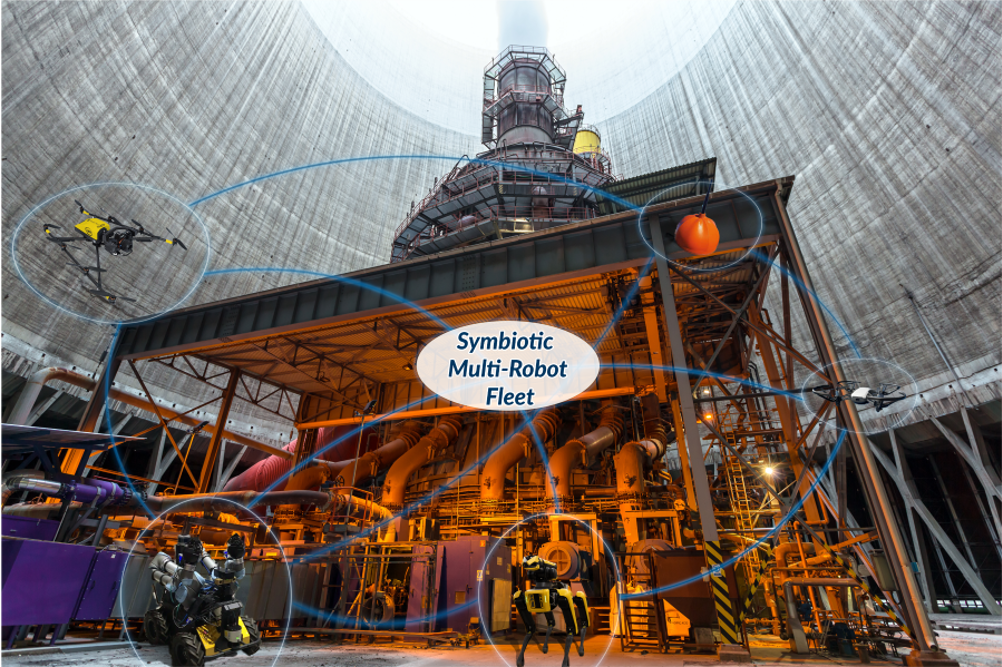Short for Symbiotic Multi-Robot Fleet, the multimodal system features Boston Dynamics’ robot dog Spot, alongside wheeled and airborne robots. Working together, the SMuRFs form a cyber physical system (CPS) capable of communicating with up to 1,600 sensors, robots and other digital and physical assets in ‘near to real-time’, as well as keeping a human operator in the loop. The system was developed by engineers from University of Glasgow, University of Manchester, Bristol Robotics Laboratory and Heriot-Watt University.
Related content
In a paper published in IET Cyber-Systems and Robotics, the researchers outlined how they deployed the SMuRFs in a practical demonstration at the Robotics and Artificial Intelligence Collaboration (RAICo) facility in Cumbria. The robots collaborated to map the environment, creating a 3D digital twin of the space using their onboard sensors, supported by further mapping from a piloted aerial drone. During the demo, Spot fetched tools for closer scans using its flexible arm, while wheeled robots Scout and CARMA mapped radiation levels. The CARMA robot also successfully detected a simulated spill of radioactive liquid underneath a waste barrel.

“The robots we programmed and designed in this prototype SMuRF each have their own unique abilities and limitations, as well as their own operating systems,” said corresponding author Daniel Mitchell, from the University of Glasgow’s James Watt School of Engineering.
“During the deployment of the SMuRF at RAICo, we were able to show how well the robots can work together and how the digital twin we built can provide remarkable situational awareness for human operators. That could make them ideally suited for the challenges of working in potentially hazardous environments such nuclear inspection and decommissioning.
“Humans will still be required to oversee and direct the robot fleet, but their high level of autonomy could help keep people safe by allowing them to interact with the robots from their desks instead of visiting work sites.”
A recent Guardian investigation raised multiple questions over the safety and working practices of the Sellafield nuclear facility in Cumbria, which has been referred to as ‘Europe’s most toxic nuclear site’. The investigation highlighted the growing problem of nuclear decommissioning as well as the limitations of humans to deal with the problems presented by highly toxic nuclear waste. Better solutions are essential, especially in light of the prominent role new nuclear energy is set to play in the energy transition.
According to study co-author David Flynn, Professor in Cyber Physical Systems at the University of Glasgow, the SMuRFs could also have uses beyond the nuclear space.
“These kinds of autonomous robotic fleets have a great deal of potential to undertake a wide range of dangerous, dirty, dull, distant and dear jobs,” he said.
“In addition to work in the nuclear sector, there’s tremendous additional potential in sectors like offshore power generation, where SMuRFs could handle many routine inspection and repair tasks. Currently, these tasks are expensive because they often require staff to be helicoptered out to offshore sites, a process which can be hampered by bad weather.”











Guest blog: exploring opportunities for hydrogen combustion engines
"We wouldn't need to pillage the environment for the rare metals for batteries, magnets, or catalisers". Batteries don't use rare...